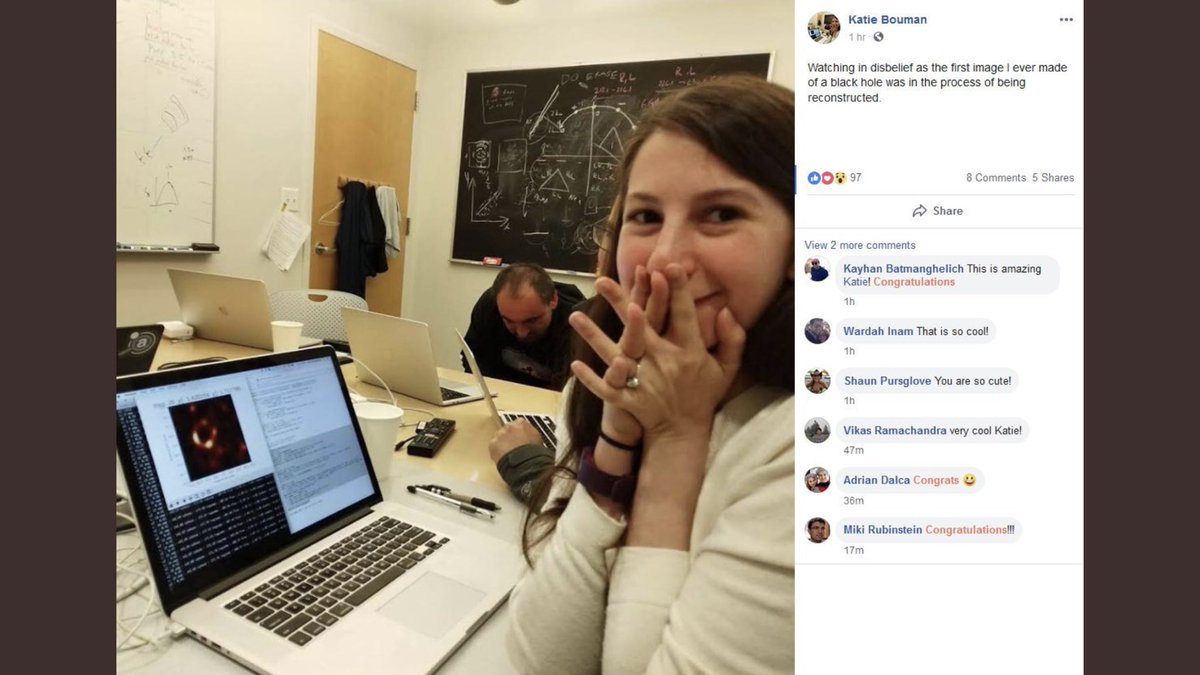Congratulations to Katie Bouman to whom we owe the first photograph of a black hole ever. Not seeing her name circulate nearly enough in the press.
Amazing work. And here’s to more women in science (getting their credit and being remembered in history) 


Dr. Katie Bouman Is The Reason We Have The First Ever Black Hole Photo
 MIT/Katie Bouman/Facebook
MIT/Katie Bouman/Facebook
Yesterday, April 10, the world was shown the first ever photograph of a black hole.
The image was captured by a global network of scientists – the Event Horizon Telescope (EHT) team – who described the picture as a major breakthrough in our understanding of the universe.
A key member of the EHT team, Katie Bouman from Harvard University, had spent years gathering the data that would eventually become the image of the black hole. Katie and her team had to create algorithms that would be able to process that astronomical data – which made up half a tonne of hard drives – that could gather the information into one, comprehensible picture.
Katie Bouman joined the EHT team six years ago, without knowing a thing about black holes. Her expertise was in computer science and electrical engineering rather than astrophysics, but her passions was ‘coming up with ways to see or measure things that are invisible’, so she was a good fit for the team.
Katie not only developed the algorithms that would lead to the production of the image but, she believes, brought a new way of thinking to the team too.
She told Time:
What I did was brought the culture of testing ourselves.
 EHT Collaboration
EHT Collaboration
Katie, working alongside teams of physicists, mathematicians, and countless scientists, stressed the importance of running tests on synthetic data, to make sure human bias was kept out of the equations.
She said:
Traditionally the way you make images in radio astronomy is you actually have a human there who is kind of guiding the imaging methods in the direction they think they should go. And for data like this, that is so sparse, so noisy, where it’s so hard to try to find an image, that was a dangerous game to play.
Katie focussed on making sure the team captured exactly what was at the centre of the M87 Galaxy, rather than just what team were hoping to find. But, thankfully, the tests worked, and what came out was the image we have today.
Katie added:
Even though we had worked on this for years, I don’t think any of us expected we would get a ring that easily. We just expected a blob.



